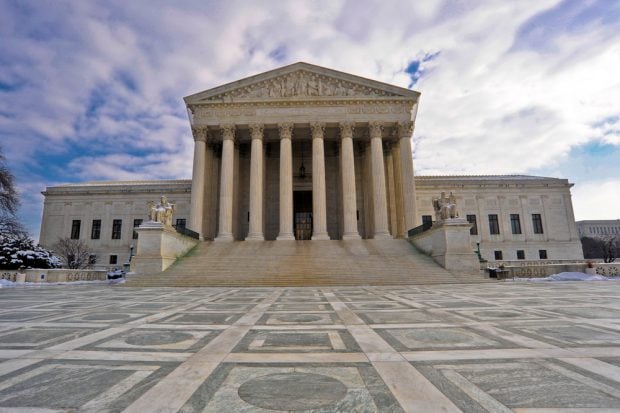You will undoubtedly be reading a lot over the next few monthsabout 12 members of Congress who wield extraordinary power over thefuture of hundreds of federal programs and tax expenditures.
|They are the members of the newly created Joint Select Committeeon Deficit Reduction charged with identifying at least $1.2trillion in deficit reductions over the next decade. The committeecan consider everything from spending cuts to tax reform toaccomplish this objective.
|The committee has an exacting schedule to make itsrecommendations and issue a final report to Congress by Nov. 23.Once Congress receives the report, it must come to the House andSenate floors for an up or down vote without amendments by Dec.23.
|Additionally, when the president recently unveiled his new jobsprogram, The American Jobs Act, he added yet another dimension tothe panel's mission. He tasked the committee with finding theadditional deficit reduction necessary to pay for the program andstill meet its deficit target. While NAFCU appreciates thepresident's efforts to address our nation's stubborn unemploymentsituation, we were disappointed that lifting the member businesslending cap was omitted from the plan since it will help spur jobcreation. We will continue to advocate for its inclusion in anyjobs bill going forward. The challenge facing the committee now hasgrown significantly. Most estimates put the cost of The AmericanJobs Act at $450 billion.
|The panel is due to receive recommendations from congressionalcommittees for items to consider by Oct. 14. This acceleratedtimeline underscores the need, when meeting with elected officials,to reinforce the service credit unions provide to America'sconsumers on a daily basis.
|The panel includes Republican Reps. Jeb Hensarling (Texas), DaveCamp (Mich.), Fred Upton (Mich.) and Sens. Jon Kyl (Ariz.), RobPortman (Ohio) and Pat Toomey (Pa.); and Democratic Reps. Chris VanHollen (Md.), Jim Clyburn (S.C.), Xavier Becerra (Calif.) and Sens.Patty Murray (Wash.), Max Baucus (Mont.) and John Kerry (Mass.). Itis co-chaired by Hensarling and Murray.
|One key item you can point to is NCUA's second-quarterdata, show a 52% increase in demand for consumer friendly,short-term small loans from credit unions as an alternative topredatory payday loans. This reaffirms the findings of a 2010 NAFCUmember survey, which found that two-thirds of respondents indicatedthat they have an underserved area as part of their membership and97.2% have loans outstanding in those areas.
|Ironically, the nation's fragile economic landscape todayparallels many of the same conditions that existed when Congressestablished the Federal Credit Union Act in 1934. Today, creditunions provide a valuable, competitive difference to nearly 93million members. According to a recent Credit Power Indexcomparison reported by The Street.com, “Our Credit Power Indexfigure for credit unions at the end of July was just 17.55…morethan five and a half points better for consumers than the interestrate climate found at banks. It's no wonder these nonprofitinstitutions have seen their numbers swell since the recession asAmericans seek out better rates.”
|As you meet with your elected officials, it is worth notingcredit unions have earned the respect and admiration ofpolicymakers because of our sensible business model and memberfocus.
|The former chairman of the House Financial Services Committee,Barney Frank (D-Mass.), has often said, “If credit unions made allof the mortgage loans, then there would have been no subprimecrisis, and therefore no economic crisis.” Indeed, Rep. Frank andformer Treasury Secretary Hank Paulson both acknowledged thatcredit unions have been impacted by the current crisis through “nofault of their own.”
|Speaking of the financial crisis, let's not miss the opportunityto remind lawmakers of how credit unions have endured during thesedifficult economic times. Without accessing TARP funds or being aparty to a bailout, credit unions have continued to self-fund theirrecovery.
|This congressional session is sure to test our mettle, making itall the more important that you remind your legislators that creditunions are about Main Street, not Wall Street.
|Credit unions continue to provide a unique service to nearly 93million members. Credit unions live up to the spirit as well as theletter of the 1934 Federal Credit Union Act. The definingcharacteristics of a credit union remain the same today: creditunions, regardless of size, are not-for-profit cooperatives thatare member-owned.
|Fred Becker is president/CEO of NAFCU.
Complete your profile to continue reading and get FREE access to CUTimes.com, part of your ALM digital membership.
Your access to unlimited CUTimes.com content isn’t changing.
Once you are an ALM digital member, you’ll receive:
- Critical CUTimes.com information including comprehensive product and service provider listings via the Marketplace Directory, CU Careers, resources from industry leaders, webcasts, and breaking news, analysis and more with our informative Newsletters.
- Exclusive discounts on ALM and CU Times events.
- Access to other award-winning ALM websites including Law.com and GlobeSt.com.
Already have an account? Sign In
© 2024 ALM Global, LLC, All Rights Reserved. Request academic re-use from www.copyright.com. All other uses, submit a request to [email protected]. For more information visit Asset & Logo Licensing.









